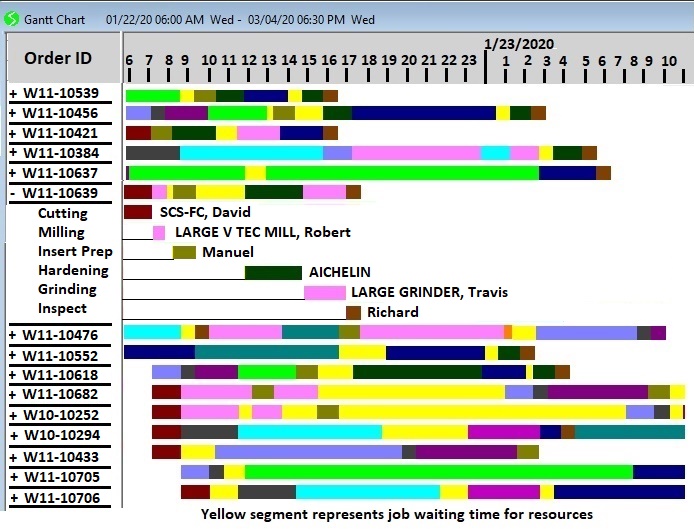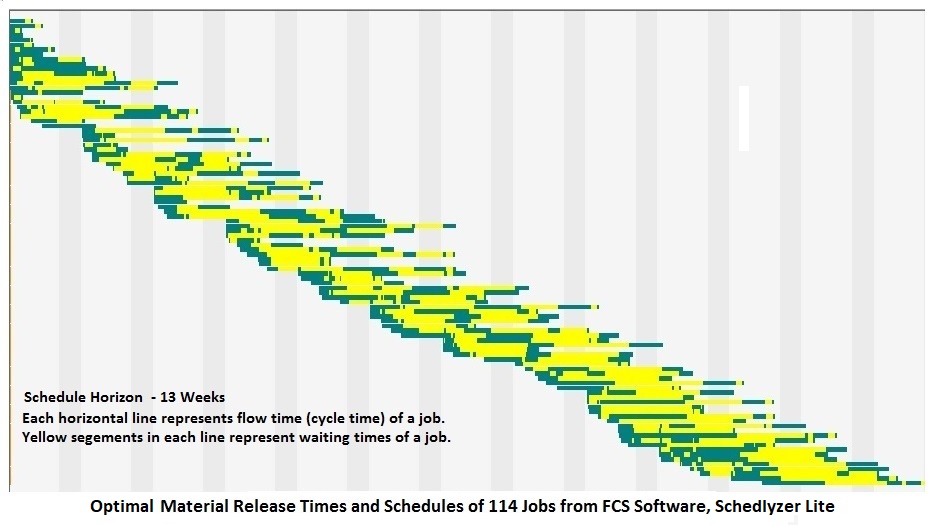Schedule-Based Control of High-Variety Production
Schedule-based production control may be the oldest control method adopted on shop floors of manufacturing industries. It predates the development of Gantt chart by Henry Gantt for generating production schedules in 1910s. Later, people in high-variety production used whiteboards, magnetic whiteboards, electronic whiteboards, commercial or custom scheduling applications in MS Excel, scheduling modules of ERP/MRP systems, project scheduling software and best-of-breed scheduling software.

Even though a majority of these tools do not seem to generate good production schedules, most people in high-mix, low-volume production still pursue schedule-based production control and management. This is despite the promotion of other approaches like Pull system (of lean manufacturing), the theory of constraints, Factory Physics, Quick Response Manufacturing, etc. over years for the same purpose. Application of these methods is still uncommon in job shops. Almost all of these methods are reactive in real time whereas schedule-based production control is proactive based on prediction of progress of work orders and bottleneck formations.
In high-variety manufacturing units like job shops, schedule-based production control is still most widely adopted but people discuss least about it publicly. Its widespread application shows how much faith factory people still have in it. Paradoxically, people underestimate the true practical value of scheduling solutions because of several reasons including:
- People have a narrow view of the scope of scheduling.
- Many tools generate poor quality schedules.
- Detailed schedules generated by software tools are wrongly implemented on shop floor.
- Manufacturing consultants talk only about the wrong implementation of detailed schedules.
Advantages of Schedule-Based Production Control
In true high-mix, low-volume (HMLV) manufacturing environment, schedule-based production control is far more effective than any other method when uncontrollable variation in the system is not at a chaotic level. It determines optimal material release times for jobs such that jobs will be completed by respective due dates with minimal production lead times. The summary Gantt chart shown below displays schedules of 114 jobs. Each horizontal line represents schedule of a job. Green colored bars in each line represent scheduled durations of operations and yellow colored bars represent job waiting times for resources. The schedule shown in Gantt chart provides optimal material release times for jobs.

Powerful scheduling solutions reliably predict progress and completion times of jobs, bottleneck formations and resource utilization patterns and support (1) fast, reliable and extensive what-if analysis, (2) proactive capacity planning and (3) efficient bottleneck management. Their benefits include improvement of on-time delivery, throughput, work in process, production lead times of orders, and overall resource utilization. They help with many important job shop issues and help production managers in rational decision-making.
Schedule-based control and management of production is a powerful, proactive method for complex, high-mix, low-volume production. No other production control method can provide the specific advantages of schedule-based production control. Contact us for additional information about schedule-based control.
